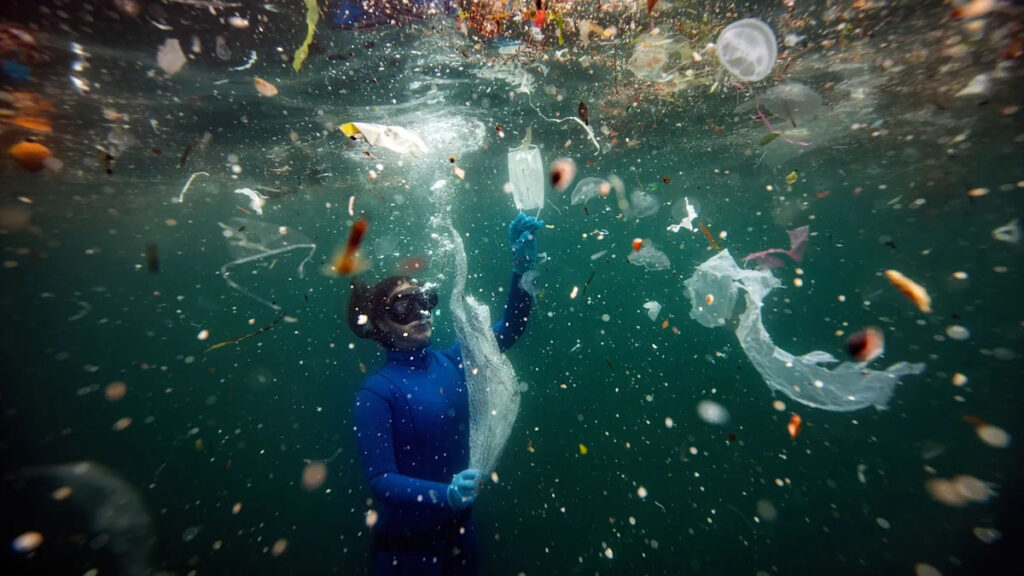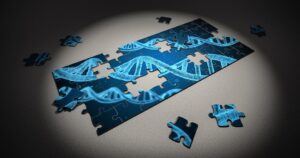
In a startling revelation, a new study published in the journal Nature on Wednesday estimates that the North Atlantic Ocean alone contains 27 million metric tons of nanoplastic. These plastic particles are 100 times smaller than the width of a human hair, and the figure is tenfold higher than previous estimates for plastic pollution of all sizes across the world’s oceans.
The research marks one of the first comprehensive attempts to quantify marine nanoplastic pollution, overcoming previous technological limitations in detection. The study suggests that the mass of nanoplastics in the North Atlantic surpasses that of larger microplastics and macroplastics. Microplastics range from 0.001 to 5 millimeters in width, making them up to 5 million times larger than nanoplastics, while macroplastics are even bigger.
Implications for Marine and Human Health
Helge Niemann, a researcher at the Royal Netherlands Institute for Sea Research and a professor of geochemistry at Utrecht University, expressed concerns about the study’s findings for both marine biology and human health. “Nanoplastics are not conducive, generally, for life,” Niemann told Grist, emphasizing that while the study focuses on the North Atlantic, it is likely that nanoplastics are widespread across other oceans.
Studies indicate that nanoplastics can cause inflammation in living cells when ingested, although the exact cause—whether the particles themselves, the chemicals they release, or pathogens they carry—remains unclear. Due to their minuscule size, nanoplastics can more easily penetrate biological membranes than their larger counterparts.
Tracey Woodruff, a professor of reproductive health and the environment at the University of California, San Francisco, who was not involved in the research, anticipates that nanoplastics will be linked to similar health risks as microplastics, including reproductive issues and various cancers in animals. Microplastics also bioaccumulate, traveling up the food chain as larger animals consume smaller ones.
Research Methodology and Findings
The study’s authors collected data during a 2020 research cruise, sampling water at 12 locations of varying depths across the North Atlantic. Five samples were taken from within the North Atlantic gyre, known for its “garbage patch” of plastic waste. Researchers analyzed nanoplastic concentrations at three depths: 10 meters below the surface, 1,000 meters deep, and 30 meters above the seafloor.
Using a novel type of mass spectrometry, they identified three polymers: polyethylene terephthalate (PET), polyvinyl chloride, and polystyrene, with PET being the most widespread. Nanoplastic concentration was highest near the surface at 18 milligrams per square meter and lowest near the seafloor at about 5.5 milligrams per square meter.
Eighteen milligrams per square meter might not seem like much. But, it’s the equivalent of containing seven mosquitoes in a 3-foot by 3-foot box, assuming each mosquito weighs roughly 2.5 milligrams.
Challenges and Future Directions
Martin Wagner, a biology professor at the Norwegian University of Science and Technology, cautioned that the study’s extrapolation relies on “very few samples.” However, he acknowledged the likelihood of significant nanoplastic presence given the high volume of larger plastic fragments entering oceans annually. According to the United Nations, approximately 20 million tons of plastic enter aquatic ecosystems each year.
Woodruff noted, “We’ve basically been dumping plastic in the ocean for decades. It doesn’t go away; it just breaks down into smaller plastics, so it makes sense that you would find more nanoplastics than macro and microplastics.”
Notably, the study could not detect the world’s two most common plastic polymers: polyethylene and polypropylene, suggesting the estimate for nanoplastics may be conservative. Niemann emphasized the need for further research on nanoplastics, including their global prevalence and potential for natural breakdown by bacteria.
Global Policy Implications
The findings contribute to the growing body of evidence supporting limits on global plastic production, a topic of ongoing debate among world leaders. The United Nations Environment Programme projects that plastic production could triple by 2050, a trend experts argue must be reversed.
“This reinforces how important it is to cap [plastic production], leave fossil fuels in the ground, and look to alternatives,” Woodruff said. The next round of negotiations over the U.N.’s plastics treaty is scheduled for next month in Geneva, Switzerland, where these issues will be further discussed.
The study underscores the urgent need for international cooperation and innovative solutions to address the pervasive and growing threat of plastic pollution in our oceans.







